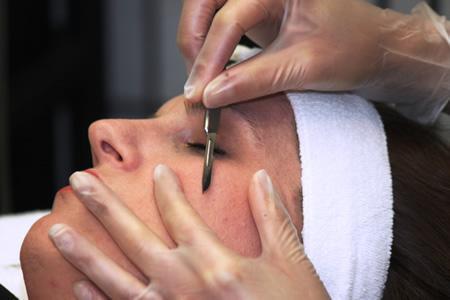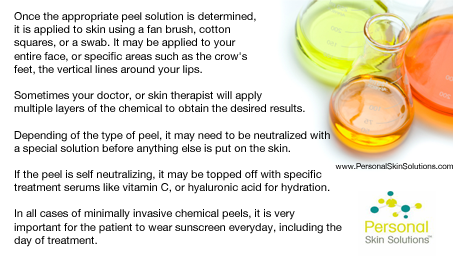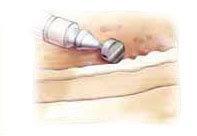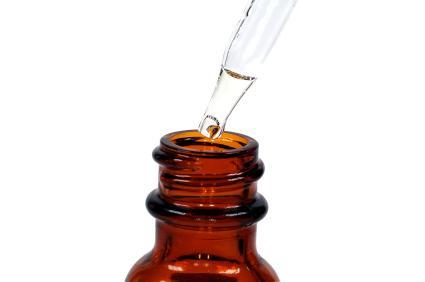Advanced Exfoliation
In our previous post we discussed the professional skin care treatment, the facial–which is the foundation for the next level of professional skin care treatment, advanced exfoliation procedures. These procedures are usually considered minimally invasive, and typically have little or no recovery time, but boy do they produce results! Tweet this
In this post I am going to cover some of the more common advanced exfoliation treatments. This is in no way a complete list, but it does represent the procedures you are most likely to find at your local spa or doctor’s office.
Advanced Exfoliation: Microdermabrasion
Microdermabrasion is a very effective surface exfoliant, and perhaps the least invasive of the advanced exfoliation techniques. It is not a product, but a tool that fits in the hand, and looks like a pen.
The wonderful aspects of microdermabrasion are that there are virtually no side affects, there is no down time, and it can be used in conjunction with a chemical peel for even better results (must only be done by a trained professional).
The hand piece of the microdermabrasion machine sprays out crystals on to the surface of the skin (think sand blaster). The crystals lightly abrade the skin, pulling up dead skin cells, evening out the texture, and allowing for better product penetration. What does it feel like? A cat licking your skin : )
The whole process takes anywhere from 15 to 30 minutes, and can be done as part of a professional facial. For optimal results, microdermabrasion is most effective if done as a series of 4-6 treatments. You can expect to pay $100 – $200 per treatment.
This video does a great job of explaining the microdermabrasion, advance exfoliation procedure.
Advanced Exfoliation: Dermaplaning
Ahhhhhh dermaplaning, the treatment I wanted to hate…but ended up LOVING! No really, the idea of having someone you don’t know taking a scalpel to your face can be very unsettling, be I encourage you to keep reading.
Dermaplaning is an advanced exfoliation procedure where the upper-most layers of the skin are carefully scraped off with a #10 surgical blade.

The intended result of this treatment create a smoother, revitalized skin surface. The amazing side benefit is that this advanced exfoliation technique is that it will also remove any and all facial hair. When I tell this to my clients, their most common response is “won’t that make the hair grow back in like stubble?” The answer is no (for women).
The facial hair on women is “vellous,” which is very thin, typically translucent, and frequently hard to see. When removed in anyway, vellous hair cannot grow back in any other way then as vellous hair. Men’s facial hair, the hair on our legs and other body parts is called “terminal hair.” During puberty, our hormones physiologically change the hair in these areas into a thicker, darker, more coarse hair. When we shave it, it grows back in a terminal hair. The point here is that in dermaplaning, the hair you start with is the same hair that will grow back in later.
Although dermaplaning is a highly effective treatment on it’s own, frequently, your skin care professional will make it a very advanced exfoliation procedure by adding a chemical peel to the end of the treatment. This is particularly effective for battling age spots, uneven surface texture, and fine lines. You can expect to pay $75-$150 per treatment.
Dermaplaning is recommended for every skin type, even sensitive skin. However, if you have active, pustular acne, this is not the treatment for you.
Advanced Exfoliation: Chemical Treatments
Chemical Peels
There are many different types and strengths of chemical peel available today. For the purpose of this post, I am only going to discuss light to medium strength peels. Deep peels are very invasive, and require a long recovery time, often with round the clock medical attention. In recent years, this type of peel has become less popular as light to medium strength peels have proven to be enormously successful without the downtime and complications.
The basic premise of all chemical peels is to remove the dead and damaged layers of skin, forcing the skin to regenerate new, healthy skin cells. A chemical peel can be a deeper exfoliation than scrubs, microdermabrasion and enzyme peels. Chemical peels should only be performed by well-trained, experienced professionals. Tweet this
 The pricing for chemical peels varies greatly. It would be reasonable to expect to pay a minimum of $100 per treatment. The following are the most common types of chemical treatments peel available today:
The pricing for chemical peels varies greatly. It would be reasonable to expect to pay a minimum of $100 per treatment. The following are the most common types of chemical treatments peel available today:
- Alpha Hydroxy Acid
- Beta Hydroxy Acid
- Retioic Acid Peel
- TCA (Trichloracetic acid) Peel
- Jessner’s (modified Jessner’s) Peel
Alpha Hydroxy Acid Peels:
I consider the Alpha Hydroxy Acid (AHA) peel to be one of two the entry level peels. AHA peels, and Beta Hydroxy Acid peels. Alpha hydroxy acids (AHA) are synthetic versions of acids derived from fruit sugars. Frequently you will see them listed in skin care products as glycolic acid, or malic acid. These peels are suited to those with highly sensitive skin, or those with slight facial discoloration, superficial lines, and dry skin.
If you are looking for an easy-breezy treatment, the AHA peel is perfect. It is the true “lunch time” peel, as your face looks super fresh immediately after treatment. If you are looking deeper, more long term effects, a TCA peel, or Jessner’s could be more appropriate.
Beta Hydroxy Acid Peels
Beta Hydroxy Acid (BHA) peels can be an excellent choice for those with breakout prone skin. BHA’s have the ability to penetrate into pores more deeply than AHA’s. They also do a terrific job of decreasing sebum (oil) production, and removing the dead skin cells.
Retinoic acid peel
Retinoic acid, a vitamin A derivative, is a deeper peel than the AHA or BHA peels and is used to reduce the appearance of scars, wrinkles and discoloration issues. Frequently a Jessner’s peel is done on the skin immediately before this treatment so that the retinoic acid can penetrate more deeply.
Like the other mid-medium chemical peels, retinoic acid helps to stimulate new collagen production, and slough off dead and decaying skin cells.
Jessner’s Peel:
A Jessner’s peels are frequently used to reduce fine line and wrinkles, correct sun damage, skin imperfections, and dehydration.
The Jessner’s formulation is a combination of 14% salicylic acid, lactic acid, and resorcinol in an ethanol base. It effectively breaks down the cellular bonds that prevent your skin’s natural exfoliation. Jessner’s peel can be a safe choice for advanced exfoliation because of it’s low percentages of active ingredients.
TCA Peel:
A Trichloroacetic Acid (TCA) peel is often used for the treatment of mid-level wrinkles, skin discoloration, and skin blemishes. This type of peel is considered a medium peel, and works more deeply to renew the skin and eliminate fine lines.
TCA peels can be used all over the face, or spot-applied to address very specific areas such as sun spots, lip lines, or light scars. TCA peels are not very effective on dark acne scars.
The results of TCA peels vary according to the strength (percentage) of the TCA, and the method of application. Skin care professionals like using TCA peels because it offers a lot of flexibility for customization.
Advanced Exfoliation: Dermabrasion
 Dermabrasion is the most advanced exfoliation procedure I will discuss in this post. I will say at the outset, it is pretty gnarly (I am a SoCal girl), but can be very effective for those who need it. This is not a treatment for fine lines, or slight imperfections.
Dermabrasion is the most advanced exfoliation procedure I will discuss in this post. I will say at the outset, it is pretty gnarly (I am a SoCal girl), but can be very effective for those who need it. This is not a treatment for fine lines, or slight imperfections.
Dermabrasion is a technique that uses a wire brush or a diamond wheel with rough edges (called a burr or fraise) to remove the upper layers of the skin. The brush or burr rotates rapidly, taking off and leveling (abrading or planing) the top layers of the skin. This process injures or wounds the skin and causes it to bleed. As the wound heals, new skin grows to replace the damaged skin that was removed during dermabrasion. WebMD.com
I mentioned before that dermabrasion is gnarly. You need to prepare yourself for what your skin will look like in the days following the treatment. All areas treated will look like a badly skinned knee. If you follow your doctor’s instructions, your skin should heal beautifully. If you are considering dermabrasion as a form of advanced exfoliation, take the time to find the very best doctor to perform the procedure. It’s your face.
Pricing for Dermabrasion will be different for every doctor. I’ve seen it as low as $1500, but this is not a procedure I would look for the lowest price on.
A final note on any advanced exfoliation technique
No matter what level of exfoliation you ever have performed on your skin, it is critically important to wear sunscreen. When the layers of dead skin cells are removed, your skin is very very vulnerable to the damaging effects of ultra violet rays. You are also more susceptible to burning, and discoloration which kind of defeats the purpose of having an advanced exfoliation.
I recommend using light weight SPF of 30+ from a trusted source like Coola or Dermalogica.
What is your favorite advanced exfoliation technique?
Disclosures
Sources:
MD Renwal.com: http://mdrenewal.com/aesthetic-treatments/dermaplaning/
The American Society of Plastic Surgeons: http://www.plasticsurgery.org/cosmetic-procedures/dermabrasion.html#content
WebMD.com: http://www.webmd.com/healthy-beauty/dermabrasion-21085
The American Society for Aesthetic Plastic Surgery: http://www.surgery.org/consumers/procedures/skin/mircrodermabrasion
Livestrong.com: http://www.livestrong.com/article/93462-effects-alpha-hydroxy-skin/#ixzz2HJXqJha3
The Journal of Clinical and Aesthetic Dermatology: http://www.ncbi.nlm.nih.gov/pmc/articles/PMC3196301/
Image/Video Sources:
Desert Aesthetic & Lifestyle Institute: http://deseretskin.com/dermaplaning.html
RealSelf.com http://www.realself.com/guide/skin-resurfacing-information



